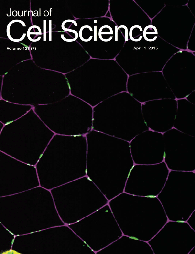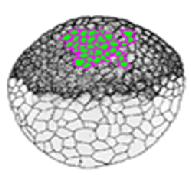
Sulf1 has ligand-dependent effects on canonical and non-canonical Wnt signalling.
Simon W. Fellgett, Richard J. Maguire, and Mary Elizabeth Pownall
Journal of Cell Science 2015 Apr 1;128(7):1408-21. doi: 10.1242/jcs.164467.
Abstract
Wnt signalling plays essential roles during embryonic development and is known to
be mis-regulated in human disease. There are many molecular mechanisms that ensure
tight regulation of Wnt activity. One such regulator is the heparan-sulfate-specific
6-O-endosulfatase Sulf1. Sulf1 acts extracellularly to modify the structure of heparan
sulfate chains to affect the bio-availability of Wnt ligands. Sulf1 could, therefore,
influence the formation of Wnt signalling complexes to modulate the activation of
both canonical and non-canonical pathways. In this study, we use well-established
assays in Xenopus to investigate the ability of Sulf1 to modify canonical and non-canonical
Wnt signalling. In addition, we model the ability of Sulf1 to influence morphogen
gradients using fluorescently tagged Wnt ligands in ectodermal explants. We show
that Sulf1 overexpression has ligand-specific effects on Wnt signalling: it affects
membrane accumulation and extracellular levels of tagged Wnt8a and Wnt11b ligands
differently, and inhibits the activity of canonical Wnt8a but enhances the activity
of non-canonical Wnt11b.

Click image below to watch a video describing methods used in the Fellgett 2015 paper
Using Confocal Analysis of Xenopus laevis to Investigate Modulators of Wnt and Shh
Morphogen Gradients
Simon W. Fellgett , Simon A. Ramsbottom , Richard J. Maguire, Stephen Cross, Peter
O'Toole, and Mary Elizabeth Pownall
Journal of Visualized Experiments 2015 Dec 14;(106). doi: 10.3791/53162.
Abstract
This protocol describes a method to visualise ligands distributed across a field
of cells. The ease of expressing exogenous proteins, together with the large size
of their cells in early embryos, make Xenopus laevis a useful model for visualising
GFP-tagged ligands. Synthetic mRNAs are efficiently translated after injection into
early stage Xenopus embryos, and injections can be targeted to a single cell. When
combined with a lineage tracer such as membrane tethered RFP, the injected cell (and
its descendants) that are producing the overexpressed protein can easily be followed.
This protocol describes a method for the production of fluorescently tagged Wnt and
Shh ligands from injected mRNA. The methods involve the micro dissection of ectodermal
explants (animal caps) and the analysis of ligand diffusion in multiple samples.
By using confocal imaging, information about ligand secretion and diffusion over
a field of cells can be obtained. Statistical analyses of confocal images provide
quantitative data on the shape of ligand gradients. These methods may be useful to
researchers who want to test the effects of factors that may regulate the shape of
morphogen gradients.
Pownall Publication Highlights







